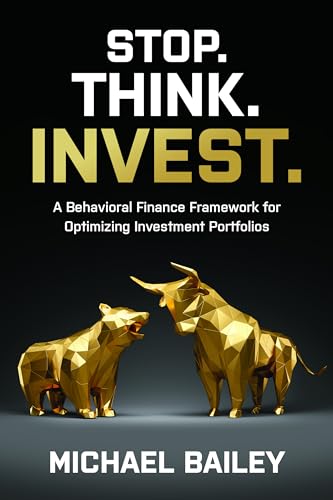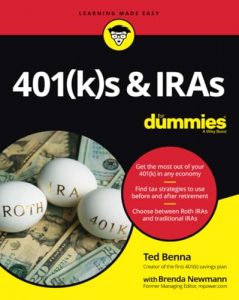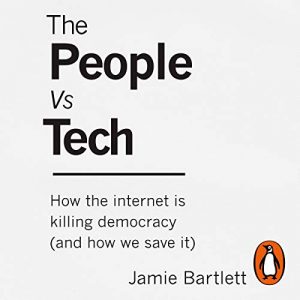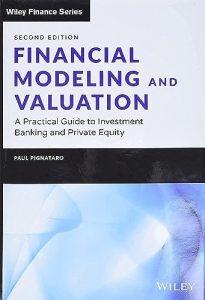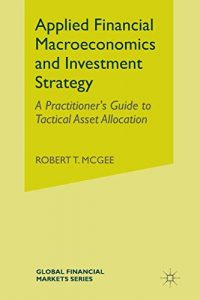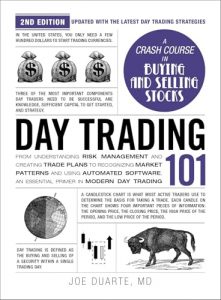1. Stop. Think. Invest.: A Behavioral Finance Framework for Optimizing Investment Portfolios
By Michael Bailey, this book delves deep into the psychology of investing, urging readers to understand the behavioral biases that can affect their financial decisions. It provides practical frameworks for optimizing investment portfolios, leading to more informed decision-making. The insights offered in this book can dramatically enhance your investing strategy, making it a must-read for anyone serious about achieving financial success. Whether you are a seasoned investor or just starting out, this book will help you approach investments with a critical and analytical mindset.

2. Advanced Positioning, Flow, and Sentiment Analysis in Commodity Markets
This insightful work by Mark J. S. Keenan bridges fundamental and technical analysis specifically for commodity markets. It introduces advanced methods for positioning and flow, integrating sentiment analysis to enhance investment strategies. Particularly for professionals dealing with commodities, this book is not merely informative but transformative, offering techniques to harness market insights effectively. It is a crucial read for those looking to ingrain a more analytical approach in their trading practices.

3. 101 Things Everyone Should Know About Economics
Peter Sander presents essential economic principles in a digestible format, perfect for anyone curious about the world of finance. This book covers everything from derivatives to hedge funds, offering practical knowledge to understand economic interactions and their ramifications. Sander’s approachable writing style makes complex concepts accessible, making this an ideal introduction for new investors or those seeking to brush up on the basics.

4. Behavioral Finance and Capital Markets
A. Szyszka provides a remarkable exploration of the intersection between psychology and finance, illustrating how human behavior shapes market movements. Understanding these dynamics is crucial for investors, as they can lead to more rational decision-making in times of volatility. This book reinforces the idea that successful investing goes beyond numbers; it embodies understanding human emotions and cognitive biases at play.

5. Investing Explained: The Accessible Guide to Building an Investment Portfolio
Matthew Partridge simplifies the often daunting subject of investing in this foundational guide. He effectively demystifies various investment vehicles, offering practical advice on building and managing a portfolio. Ideal for beginners, this book emphasizes accessibility and ease of understanding—perfect for those who want to take control of their financial future without feeling overwhelmed.

6. The Investor’s Paradox: The Power of Simplicity in a World of Overwhelming Choice
Brian Portnoy’s book tackles the complexities of investment choices and offers a refreshing take on the power of simplicity. In an age where information overload can paralyze decision-making, this guide stresses the importance of focusing on a few critical choices rather than getting lost in a sea of options. It’s a thought-provoking read for anyone looking to refine their investment strategy with clarity and purpose.

7. Fusion Analysis: Merging Fundamental and Technical Analysis for Risk-Adjusted Excess Returns
PALICKA’s work introduces readers to a hybrid approach of merging fundamental and technical analyses. This methodology is particularly beneficial for investors who aim to enhance their returns while managing risk efficiently. By unifying these two methodologies, investors gain a more holistic view of the markets, equipping them with strategies to navigate even the most turbulent of financial landscapes.

8. Market Analysis for the New Millennium
Robert R. Prechter presents a forward-thinking approach to market analysis, addressing the unique challenges and opportunities present in the modern economic landscape. His comprehensive insights into market cycles provide a foundation for making informed investment decisions, equipping readers with the ability to anticipate shifts in the markets. This book is essential for those who want to stay ahead of the curve.

9. Positioning Analysis in Commodity Markets
Another crucial read by Mark J. S. Keenan, this book explores the intricacies of positioning analysis in the realm of commodities. As the title suggests, it offers essential insights on effective decision-making strategies based on market positioning. A vital resource for serious investors looking to excel in commodity trading, it emphasizes the importance of merging diverse analytical techniques.

10. Comprendre la finance comportementale & les biais cognitifs
Baptiste Duval’s French edition explores behavioral finance comprehensively, detailing the cognitive biases that can influence trading and investment outcomes. This target audience is not only numbers-focused but also values psychology in trading. Understanding these hidden forces can provide an edge, making this book valuable for both new and seasoned traders interested in refining their approach.


